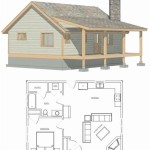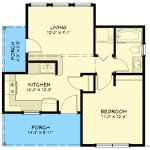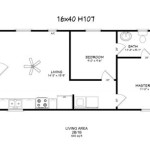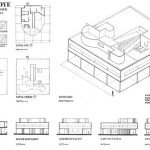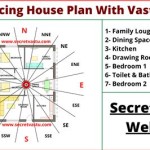Low-Budget House Plans: Building Affordably
The dream of homeownership can feel distant for many due to rising construction costs. However, careful planning and smart choices can make building a house on a budget a reality. This article explores various strategies and considerations for developing low-budget house plans, focusing on maximizing value while minimizing expenses.
One of the first steps in controlling costs is optimizing the house size. Smaller homes inherently require fewer materials and less labor, directly translating to lower construction expenses. A compact design doesn't necessarily mean sacrificing comfort or functionality. Clever space planning, multi-functional furniture, and efficient storage solutions can create a comfortable and practical living environment within a smaller footprint.
Choosing the right building materials is another crucial factor in budget management. Exploring cost-effective alternatives to traditional materials can lead to substantial savings. For instance, concrete blocks can be a more economical choice than brick in certain regions. Similarly, opting for readily available, locally sourced materials reduces transportation costs and supports local economies.
Simplifying the house design can significantly impact the overall budget. Complex rooflines and intricate architectural details add to both material and labor costs. A simpler, more streamlined design can achieve a modern and aesthetically pleasing look while minimizing unnecessary expenses. This approach also streamlines the construction process, potentially leading to faster completion times.
Prefabricated or modular construction methods offer a promising avenue for budget-conscious builders. These methods involve constructing sections of the house off-site in a controlled factory environment, then transporting and assembling them on the building site. This approach can lead to faster construction times, reduced material waste, and improved quality control, ultimately contributing to cost savings.
Energy efficiency should be a key consideration in any building project, particularly in budget-focused designs. Investing in energy-efficient features like proper insulation, energy-saving windows, and efficient HVAC systems might represent a higher initial cost, but these features pay off in the long run through lower utility bills. Furthermore, many regions offer incentives and rebates for energy-efficient construction, potentially offsetting some of the upfront costs.
Thorough research and comparison shopping are essential for securing the best deals on materials and labor. Obtaining multiple quotes from contractors and suppliers allows for informed decision-making and helps negotiate competitive prices. It is crucial to ensure that all quotes are based on the same specifications to enable accurate comparisons. Transparency and clear communication with contractors are vital throughout the building process.
Prioritizing essential features and postponing non-essential upgrades is a practical strategy for managing a tight budget. Focusing on core structural elements, essential plumbing, and basic electrical work allows for a functional and habitable home within the allocated budget. Non-essential upgrades, such as high-end finishes and landscaping, can be added later as finances allow.
Exploring sweat equity opportunities can significantly reduce labor costs. If skills and time permit, undertaking certain tasks, such as painting, landscaping, or installing flooring, can generate substantial savings. However, it's crucial to realistically assess one's abilities and limitations and to prioritize safety. Professional assistance should be sought for tasks requiring specialized skills or posing safety risks.
Consulting with experienced professionals, such as architects and contractors, is invaluable throughout the planning and construction process. Their expertise can help optimize the design for cost-effectiveness, navigate building codes and regulations, and ensure the structural integrity of the building. While professional consultation represents an expense, it can ultimately prevent costly mistakes and ensure the project's successful completion.
Careful budgeting and financial planning are paramount throughout the project. Developing a detailed budget that outlines all anticipated expenses, including materials, labor, permits, and contingency funds, helps track spending and avoid overruns. Regularly monitoring the budget and adjusting plans as needed ensures the project stays on track financially.
Building a house on a low budget requires meticulous planning, informed decision-making, and a commitment to cost-effective solutions. By prioritizing essential features, exploring alternative materials, and embracing efficient construction methods, it is possible to achieve the dream of homeownership without breaking the bank.
Finally, staying adaptable and open to adjustments throughout the building process is crucial. Unexpected challenges and unforeseen costs can arise, requiring flexibility and creative problem-solving. Maintaining open communication with contractors and being willing to explore alternative solutions can help navigate these challenges and keep the project moving forward within the defined budget.

5 Cent 3 Bedroom Budget Home Design With Free Plan Kerala Planners

5 Cent Budget 4 Bedroom Home Design With Free Plan Kerala Planners

200 Top 5 Cent House Plan Design Best Collections For Small Plots

5 Cent 3 Bedroom Budget Home Design With Free Plan Kerala Plans House Bungalow Floor

5 Cent 14 Lakhs House Design With Free Home Plan Kerala Planners

Modern Small House Design Plan Homez

Angamaly 4 5 Cents Plot And 1300 Sq Ft Low Budget House For In Angamly Kochi Kerala

This House Can Be Built In 5 Cents Of Land Kerala Home Design And Floor Plans 9k Dream Houses

Brand New Best Low Budget Home For With 5 Cent Plot

ഇന വ ട പണ യ ൻ സ ഥലമ ല എന ന പറയര ത Small Plot House Plan Home Design Courtyard Plans Kerala Style Manorama

